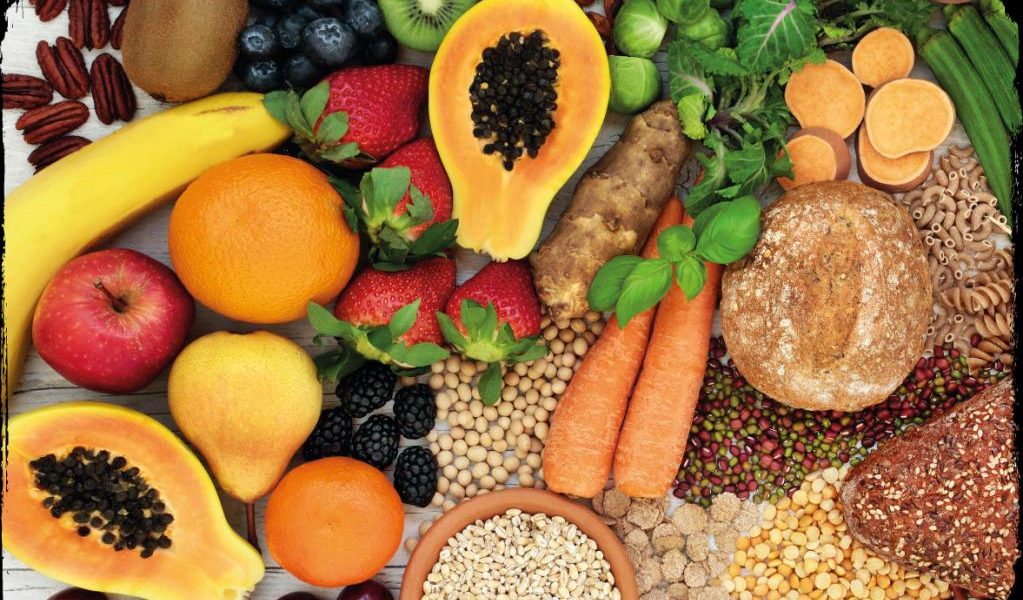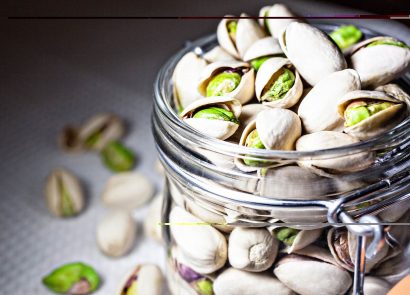How much fibre do you eat every day? The answer is probably not enough. The NHS recommends that we eat 30g of roughage a day, but most of us only eat between 15-18g. This is a worrying statistic because fibre is incredibly important, particularly as it can reduce your risk of getting bowel cancer, one of the most common cancers in the UK. So, we called in the experts to help us understand why fibre is so important to our overall health, and how we can get more into our diets. Just one more thing before you start chowing down on beans, remember to increase your intake slowly to give your gut time to adjust!
What is fibre?
“Fibre is a type of dietary carbohydrate, and carbohydrates can be broadly divided into sugars, starches and fibres,” explains Rick Miller, clinical and sports dietitian at the Institute of Sport Exercise & Health (ISEH), in partnership with HCA Healthcare UK. “The vast majority of carbs in our diets tend to come from plantbased foods, grains and cereal products, naturally occurring sugars in fruits and some vegetables, starchy vegetables (such as potatoes) and dairy products (which contain a special type of sugar called lactose). Naturally occurring sugars and starch are the ‘stored carbohydrate energy’ part of a plant. These sugars and starches are broken down easily in the small intestine when we eat them and provide an easy source of energy from food. But, unlike starches and sugars, fibrous carbohydrates make up the cell walls of plants. They are much tougher, and termed ‘indigestible’ because they’re resistant to our digestive juices – they can’t be broken down in the small intestine. So, we rely on the work of bacteria in our large colon to support the digestion of fibre, in turn, this supports a healthy microbiota colony.”
The two types
Fibre can be classed as two different types – soluble and insoluble. “Soluble fibre includes pectins and beta glucans and is found in foods such as oats, beans, lentils and fruits,” says Georgia Head, nutritionist at Fresh Fitness Food (freshfitnessfood.com). “It dissolves in water to form a gel-like substance, which increases food transit time between the stomach and the small intestine. This process slows the absorption of glucose into the bloodstream, which helps to keep you feeling fuller for longer (or at least until lunchtime rolls around) and also promotes more stable blood sugar levels. It supports the growth of the good bacteria required for optimal gut health. Meanwhile, insoluble fibre includes cellulose and lignins found in wholegrains, vegetables and nuts. As the name suggests, insoluble fibre doesn’t dissolve in water. It remains relatively intact and so speeds up the passage of food through the digestive system. This helps to maintain good gut health by increasing stool bulk and promoting regularity, plus prevents constipation. Most fibre-rich foods usually contain both types of fibre, but the amounts of soluble versus insoluble varies.”
Why do we need fibre?
It’s all well and good saying that we should eat more fibre, but do you know why that is? “Short term benefits include a reduction in the amount of cholesterol in the blood by absorbing some of it in the gut, lubricating the gut and helping to naturally support stool movement out of the gut (reducing the risk for constipation),” explains Rick. “It can also help the bowel contents to swell, promoting fullness, which may support weight loss, and it slows the release of other sugars into the blood stream, controlling blood glucose levels.” If that wasn’t enough, fibre can also help to decrease your chance of certain diseases. “The European Food Safety Authority suggests that incorporating fibre-rich foods in a healthy balanced diet can improve weight maintenance and help reduce the risks of cardiovascular disease, type 2 diabetes and bowel cancer,” says Melanie Bulger, nutrition manager at Clasado (clasado.com). “Fibre is also important because it can help increase the good bacteria in our gut, and a healthy microbiome has been shown to be important for boosting immunity, as well as improving both our digestion and mood.”
And what happens if we’re not consuming the right amount? “If we don’t get enough in our diets, it can result in constipation, decreased diversity of beneficial gut bacteria and increased risk of developing certain health conditions,” warns Kristy Coleman, nutritionist at KC Nutrition (kcnutruition.co.uk).
How much should we be eating?
“The amount of fibre we should be having in our diet progressively increases with age up until adolescence,” explains Laura Matthews, registered nutritionist. “It’s recommended that children aged between two and five should aim for 15g per day, which steadily increases up to 30g a day for 16-18-year-olds and adults.” However, despite the messages from the government, many of us fall short of this amount. “In the UK, we tend to get about 18g of fibre a day,” states Rick. “Five portions of fruit and vegetables will help you get to 30g fibre a day – that’s the equivalent of 400g of fruit and vegetables – 80g, or a cupped handful, is one serving. Wholegrain, starchy carbohydrates, such as wholemeal bread, wholegrain rice and pasta, will also boost your fibre intake. Just switching to wholegrain bread in your sandwich at lunchtime will add 4g of fibre to your diet per day.”
How can I eat more fibre?
Don’t worry if you’ve just realised how important fibre is, and how little of it you’ve been eating – there are lots of easy ways to add more to your diet without making too many changes. “Try swapping white pasta for the whole wheat alternative, and bulking up salads and soups with beans and lentils,” advises Laura. “A small handful of dried fruit, nuts and seeds (up to 30g), or some vegetable crudités, are all great, fibre-rich options to choose for a snack. My tip is to check the food labels to compare the fibre content of different products when you’re shopping for higher fibre foods.”






















